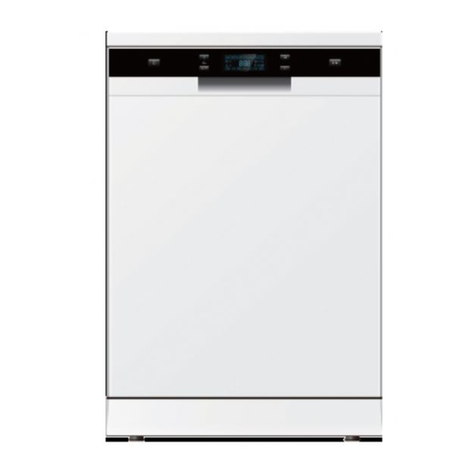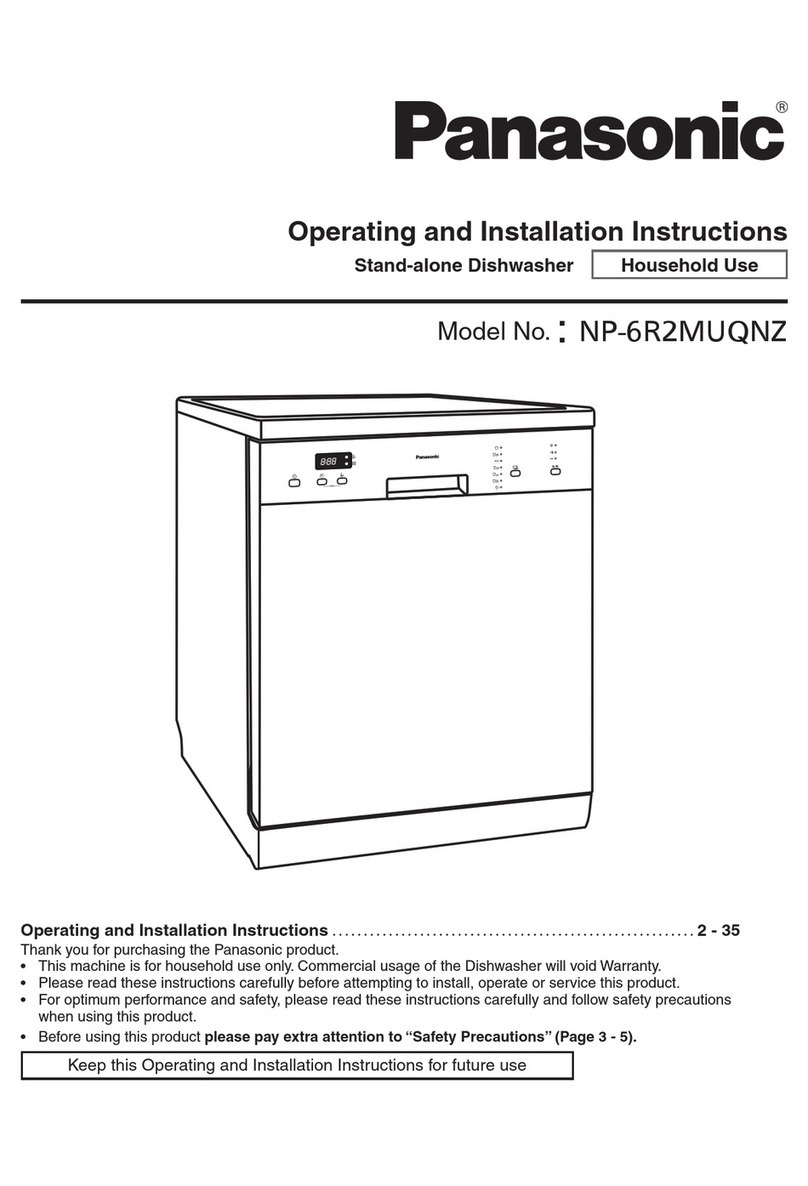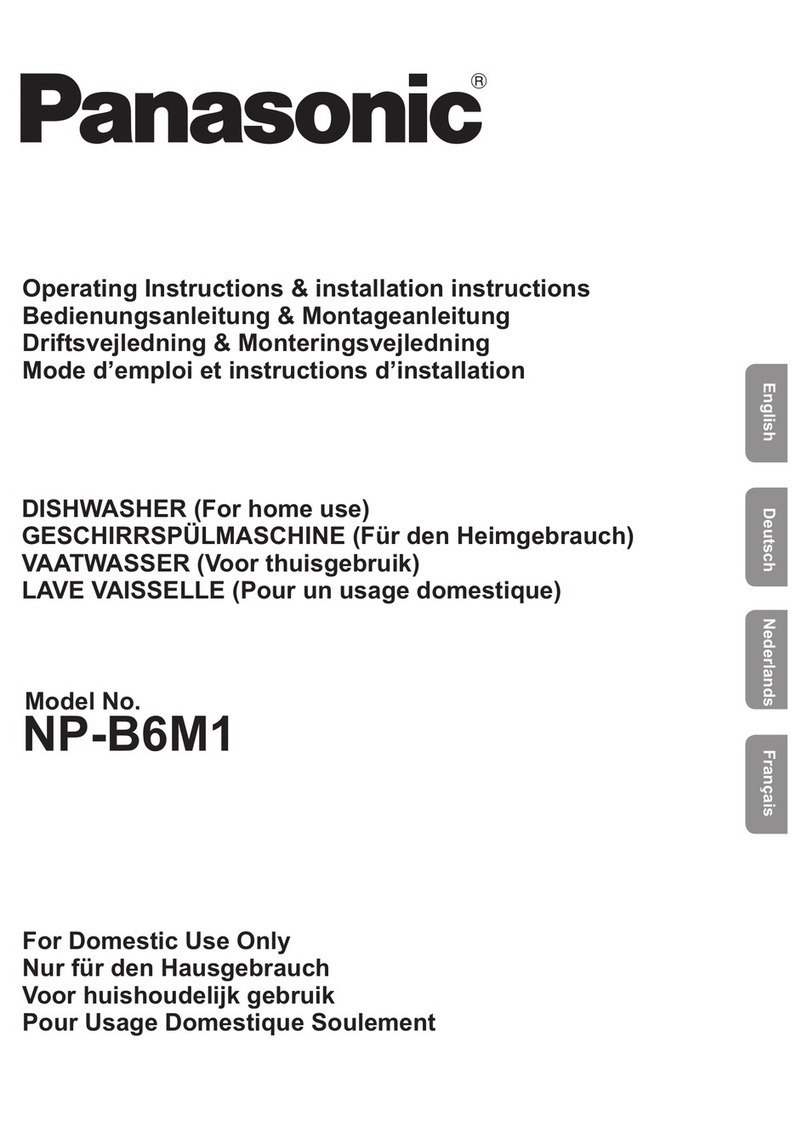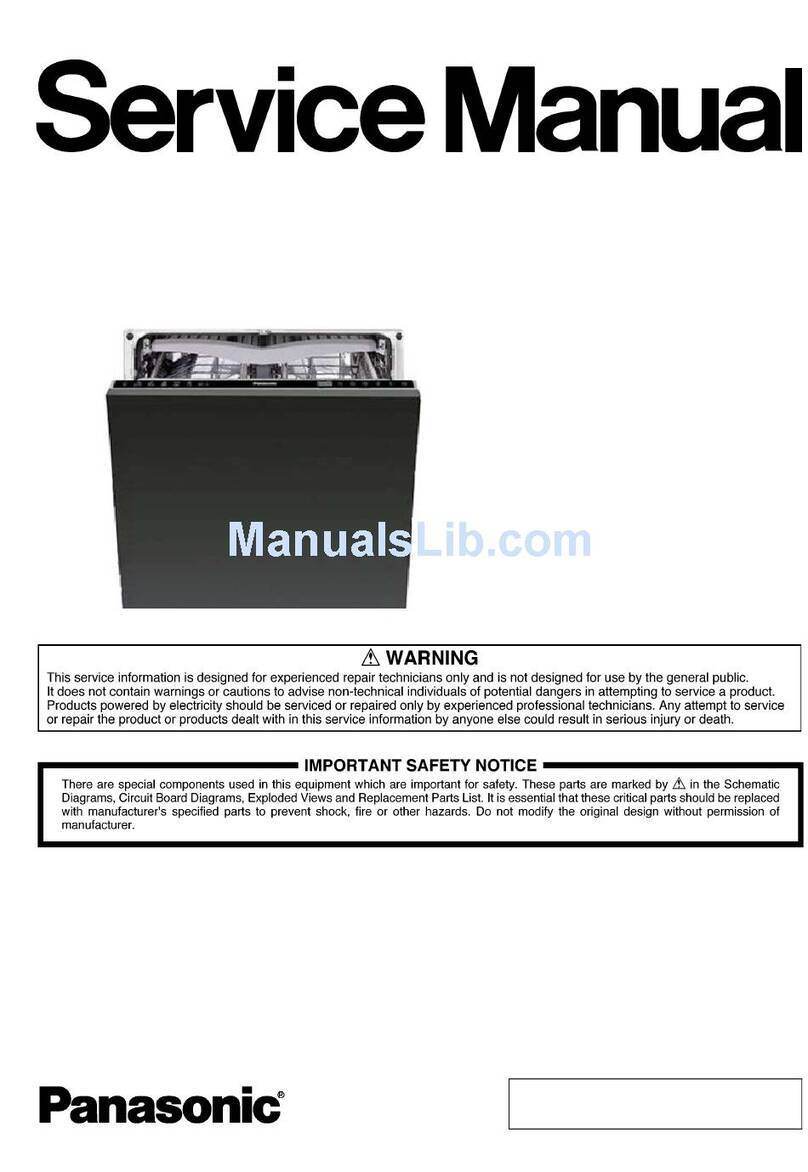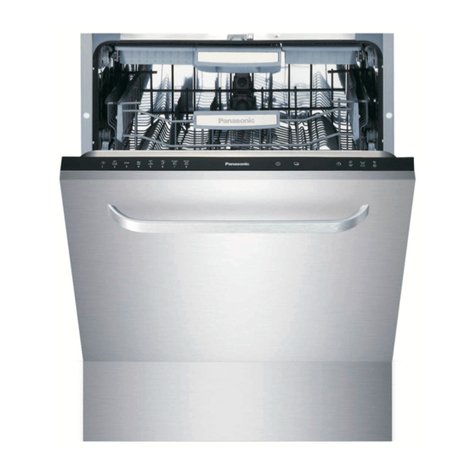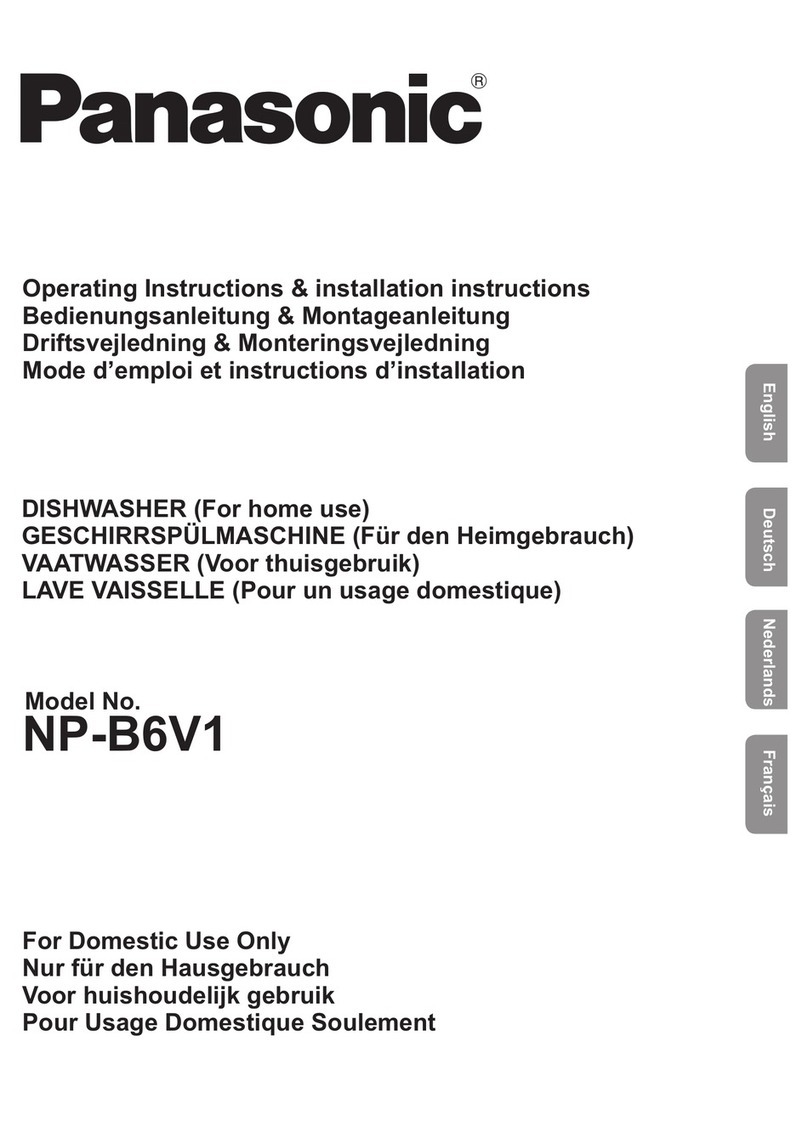10
Safety Information and Recommendations
Recommendations
• For energy and water saving, remove coarse residues from
dishes before placing them into the machine. Fully load the
machine before starting the programme.
• Use the pre-wash programme only whenever necessary.
• Place such hollow items as bowls, glasses and pots into the
machine in such a way that they will face down.
• We recommend that dishes are not loaded into your machine
other than indicated, and that the capacity is not exceeded.
Items not suitable for dishwashing:
• Cigarette ashes, candle leftovers, polish, paint, chemical
substances, iron-alloy materials;
• Forks, spoons and knives with wooden or bone, or ivory or
nacre-coated handles; glued items,items soiled with abrasive,
acidic or base chemicals.
• Plastic items that are not heat-resistant, copper or tin-coated
containers.
• Aluminium and silver objects (they may discolour, become
dull).
• Certain delicate glass types, porcelains with ornamental
printed patterns as they fade even after the first wash; certain
crystal items as they lose their transparency over time,
adhered cutlery that is not heat-resistant, lead crystal glasses,
cutting boards, items manufactured with synthetic fibre;
• Absorbent items as sponges or kitchen rags are not suitable
for dishwashing.
Warning: We highly recommend buying dishwasher
safe products in your future purchases.

